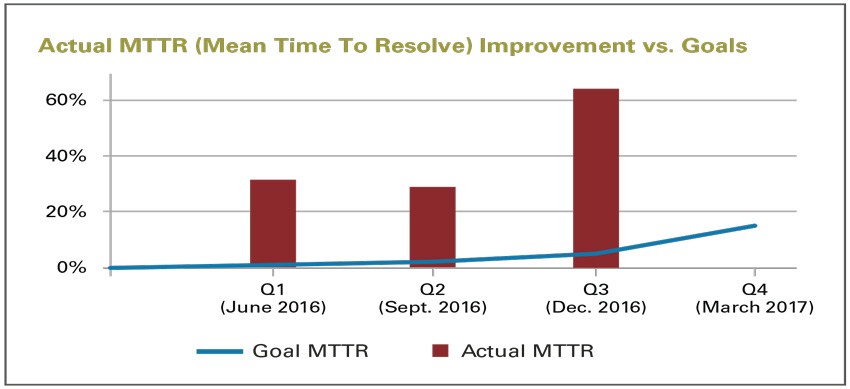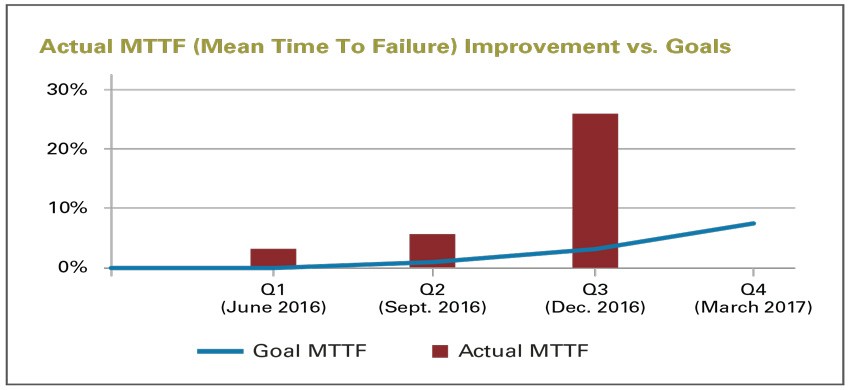Client
This European subsidiary of a global telecom provider has communication networks and partner networks worldwide providing telecommunications and IT services to corporate clients in 150 countries.
With more than 40 million mobile phone, DSL, LTE, cable internet, landline, cable TV and IPTV services customers in Europe, it is crucial to have a robust IT infrastructure that has the capacity to address a multitude of customer issues and problems every day of the year.
The decision was made to switch IT operations from being out-sourced to in-sourced with the interest of improving service for their enormous and expanding customer base. They needed a structure to manage large monthly volumes of customer issues including an average of 7,500 incidents and 150+ problem tickets.
As part of this same initiative, they also added an application operations center in India as well as a service desk in Romania.
The head of IT operations:
Having adopted ITIL®, version 3, best practices for our incident and problem management and expanding our IT operations into other countries with disparate cultures, we needed a methodology and comprehensive training that would not only overcome the cultural differences, but also sustain our best practices into the future.
Kepner-Tregoe was chosen to design and implement a program that would increase effectiveness, efficiency and maturity of their Incident and Problem Management Processes. The results were impressive.
On Course to Exceed Goals by Four Times
As part of the implementation of the Kepner-Tregoe methodology, the client set KPI goals. For incident management, it performed a baseline of its MTTR (Mean Time To Resolve) for its business-critical applications, and then set a goal of 15% improvement. For MTTF (Mean Time To Failure), the goal was an 8% improvement.
The Kepner-Tregoe implementation was launched for a 12-month period, beginning in April and ending the following March. At the nine-month mark, MTTR had improved to 64%, over four times the annual goal target.

At the end of the same nine-month period, MTTF reached 27%, exceeding the annual goal by three times.

What Made The Engagement With KT So Successful?
- The capability to implement a methodology and training program that would both overcome cultural differences, and minimize or eliminate the typical decline in service quality when opening new application operations in other countries. For example, the KT engagement identified that the employee attrition rate in India was significantly higher than expected. This provided an area of focus to address during ongoing training.
- A multi-level instructor-led training program including classroom sessions, simulation training with ongoing coaching to deeply embed needed troubleshooting skills. Approximately 300 application operation employees in Europe, 180 in India and 20 in Romania began this program in April of 2016.
- To maximize the sustainability of the solution, Kepner-Tregoe educated four people in the head office and two in India to become instructors who would deliver the training program to new employees during future expansion of IT services globally.
The Head of IT operations added:
Another aspect of the Kepner- Tregoe training that we think will help maximize sustainability is that simulator content is based on gamification, which adds an entertainment element to the primary purpose of education. The simulator component also allows us to provide employees, who may return to their former habits with repetitious training to improve their familiarity with the methodology and skills.

Not only has the Kepner-Tregoe methodology benefited our multi-cultural IT operations in three locations, but we are now applying it to our acquisition of another technology media company. In addition, Kepner-Tregoe has helped us integrate our mobile and fixed phone incident management processes with custom integration, such as quality gates between the first and second level. We’ve also benefited from Kepner-Tregoe’s perspective on over thinking KPIs. We’re redesigning our KPIs, so we have a good end-to-end view.
The service desk agent, who must address a very large number of calls per hour, now provides a higher quality of information on the ticket, so fewer tickets are returned from the second level for verification. That’s the kind of partnership we highly value.
ITIL® is a registered trade mark of AXELOS Limited. All rights reserved.





